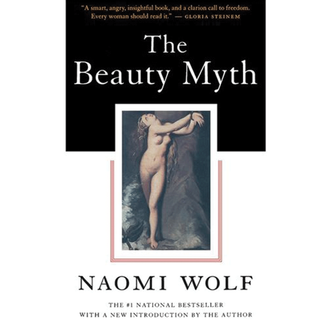
Research into Porn’s Detrimental Effects Is Conflicting
Porn is criticized for negatively influencing mental health and sexual attitudes, but research has found no causative link.

Porn in India exists in a highly stigmatized, hush-hush space, especially since the Indian government banned it in 2018. Despite the ban, India remains in the top 10 countries with the most traffic to a popular porn site, Pornhub, the company reported in its 2018 review report. In a society where explicit conversations about sex still incite discomfort and shame, it’s difficult to openly talk about the main platform we access to seek sexual imagery: porn.
The taboo and ban associated with porn only allow us to discuss why porn is bad and prevents us from acknowledging that our basis for believing in porn’s negative effects is possibly prejudiced.
The many studies into porn’s effects have a disclaimer at the end: there has been no causal relationship established between porn and detrimental sexual or mental health, merely a correlation, which makes results inconclusive. On top of that, the research that is performed is quickly out of date; with the internet, porn is more pervasive than ever, growing and evolving faster than the pace with which scientists can study it – which makes it even more difficult to draw conclusions. All of this creates an environment in which stigma triumphs over fact.
Anti-porn messaging has relied heavily on partial research, which ignores similar studies that either disprove popular research or provide contradictory results. A comprehensive review of porn research shows we’re wrong about the absolute conclusion that porn is bad for us. Here is everything we are able to conclude about porn’s effects on us, its viewers – and why we should take anti-porn messaging with a grain of salt.
Porn’s effects on adolescent well-being can be both good and bad.
Pornography may cause adolescents to feel insecure about their bodies, their appearance or their sexual prowess, according to a review of porn research. It can also lead to relationship dysfunction and social isolation among adolescents. It can lead to young people who are exploring sex develop unrealistic attitudes about sex, indulge in more casual sex and be exposed to gender-stereotypical, heteronormative sex roles (i.e., the man is aggressive, the woman is submissive), according to research conducted by several British universities in partnership with England’s Children’s Commissioner.
Another study sought to understand when adolescents were first exposed to porn, and if the age at which they first watched porn determined the subjects’ attitudes toward sex, women, or their own selves. They found study participants who were exposed to porn at an age too young (pre-pubescence) had more advanced sexist attitudes, instead of those who were exposed to porn at a later age. This coincides with logic: the younger a person is when they’re exposed to sexual imagery, the less able they are to comprehend it and imbibe in a manner that is sexually and mentally healthy.
M.A, 23, male, started his sexual education at 13, through Google Image searches and historical fiction. When he started having sex with men, he realized he could only climax by masturbation, and not with the help of his partner. When he abstained from watching porn for a week, he adds, he overcame his difficulties. Porn can make the viewer think pornographic sex is how intercourse takes place in real life, M.A. says.
“If I have watched porn three to four times a day and I go out – the way I look at men is radically different. I feel almost enabled and emboldened to be ready to go for it and touch them as if it would be consensual by the very act of me being sexually attracted to them,” he says. “I think that’s what porn does. Obviously, I don’t act on this, but this is the stimulation we get via porn. This is how you engage with your world. What’s on screen is translated into life – and vice versa, really.”
However, for every study that alleges porn’s detrimental effects on adolescents, there is an equal and opposite study that shows positives. Some research shows porn’s effects can be positively related to sexual satisfaction and self-esteem. Other studies have shown a significant relationship cannot be established between porn and how we form attachments to others in society.
For D.N, 24, male, porn has served as a learning experience, especially for desires he could not comfortably articulate in real life. “[Experimenting with porn] is like a stage in a video game and you look at it and think, ‘oh, wow I can do this too’?”
Related on The Swaddle:
Sunne Leone Can Be A Pornstar And A Warrior Goddess
Porn’s effects on mental health are not well-known.
Popular literature around porn asserts that it can cause depression and anxiety in viewers of all genders, especially if indulged in excessively. However, a review of published research about porn’s effects showed no consistent evidence to support this claim.
On the contrary, people often use pornography as an entertainment medium to boost their moods. People with depression or anxiety often use porn to alleviate related negative states, such as boredom, stress, or sadness. The only link between porn’s effects and mental health that has been established is that people who have low life satisfaction often use more pornography, which again shows a correlation, but not causation.
“I have definitely spent a lot of time treating porn as a mood-booster during the low periods of my life (for eg: when I was unemployed, or going through anxiety or depression),” A.S, 27, female, says. “Porn and masturbation work very well for mood swings. I think it becomes an issue in my head only when it is a prolonged phase and I am using it to avoid having difficult conversations with myself.”
Porn definitely set unrealistic standards for A.S. and made her feel like she needed to match her sex life to its portrayals. But she finally came to a conclusion about it: “Now I am able to remove myself to an extent and consume porn simply for what it is – a heavily-edited, fluffed-up fantasy, which requires the same kind of production and effort as other content.”
Porn doesn’t always prompt distaste in women; gendered experiences and preferences toward sex do.
Adolescent boys and young men have a predominantly positive view of porn, while young girls see it as distasteful, according to the research by British universities. Pornhub data shows women make up 29% of visitor traffic to the website. This reflects the societal practice where boys are normally encouraged, or at least easily condoned when they exhibit sexual behavior, including porn watching – while girls are made to feel ashamed of their sexuality.
“Porn videos basically show you different types of positions to try which brings out new fantasies to try out. Watching porn can make your imagination better as you get some creative techniques or ideas to surprise yourself or your partner,” J.D, 24, male, says.
For women recounting their first experiences with porn, the story is a lot different. From a young age, girls are taught to be ashamed of their sexuality, which informs their opinion and attitudes toward sex. They also bear the disproportionate brunt of sexualization and sexual harassment at a young age, which skews their attitudes toward sex.
For A.I., 24, female, a sexually harassing experience at age 11, when she was forced by an older man to watch porn, affected the way she viewed sex. “I am often disgusted when people explicitly describe sexual activities such as indulging in oral sex, humping, giving a boner, etc,” she says, adding she is sexually active, but cannot bring herself to talk about sex. “I cannot watch porn till date, I get disgusted and all the past events flash in my memory.”
Related on The Swaddle:
Talking Sexual Values With The Founder of MakeLoveNotPorn.TV
A major critique of porn is its portrayals of women, and the ways in which verbal and sexual abuse against them is normalised in mainstream videos. A few studies show that watching aggression in porn, the kind that is not condemned, but encouraged and glorified, has a detrimental effect on the viewer, especially a young one. But whether that aggression, or harmful depictions of sex, translate to the viewer’s sex life remains unexplored.
“Porn at a point, for me personally, felt triggering due to my history with certain acts that felt demeaning. The fact that really hit me is that somehow I had ended up contributing to a notion of sex which was abusive; although we know and hope that all participants in the video had consented, we also know that this isn’t true for a lot of the cases,” A.A, 24, says of abusive cultures in porn on and off the screen. “It made me take time off porn and review my personal choices and preferences.”
Past anti-pornography movements have focused on this particular aspect: the subjugation of women in porn, saying it shows women as being silenced and dominated, and only worthy of abuse. But, this silencing of women cannot be attributed to porn only, Carlin Meyer writes in Sex, Sin, and Women’s Liberation: Against Porn-Suppression. “Men are impelled to violence from anger at and fear of matriarchal rule (and of mothers’ scorn and punishment); from fury at women for imposing on them a moral straitjacket while simultaneously tempting them to sin; from denigration and disdain for women’s purported lack of intelligence and capacity; from the desire for conquest and control.”
There are many more mediums through which society disseminates the messaging of silencing women, which an individual consumes far more frequently than they do porn, she argues. “Feminists should especially target the places in which ideologies of masculinity are most centrally forged and practiced, and where the association between masculinity and abuse of women is earliest and most deeply inculcated,” such as sports, military, and popular culture.
Even this relatively positive view overlooks the sexual exploration aspect of pornography: what if some of the ways in which porn portrays sex, at least in mainstream videos, is not regressive, but emblematic of some groups’ sexual desires?
“Porn has always existed as a kind of doppelganger to popular culture and it has often formed my perceptions about things in life as well,” A.S. says. “While porn is definitely a poor instructional source for sex, I have noticed myself exploring ideas about sexuality and sexual experiences through porn.”
For A.S, porn is about being able to find comfort and acceptance in her desires, being able to determine what turns her on, and evaluate her boundaries. Porn has also helped her come to terms with her feminist self, who is comfortable expressing her needs and letting go of inhibitions. “I think I am able to explore a submissive sexual experience (bondage, for example) and live it in my head while watching porn, discuss it with my partner as a kink we could explore, but which I may not be incorporating in my public persona, where the effort is to stay independent and firm, for me. I think the idea of choosing to let go of control to someone you trust is important to me because it takes a level of self-assuredness.”
It might be that considering some of porn’s portrayal of women (as sexually submissive, welcoming verbal or physical abuse) as regressive, might in itself be regressive and in ignorance of a wide spectrum of women’s sexuality and desires. Pornhub’s data shows that while women were twice as likely than men to search for “Romantic”, they were also more likely than men to search for “Gang Bang” and “Double Penetration.” This suggests the stereotype that women find all violent sex distasteful is false, and they might use mainstream porn’s portrayals of such sex in the stride of their own sexual exploration. But this view only holds when the sex exists in isolation, and provides a facet of sexual exploration that may not have been accorded to women previously, i.e. liking sexual submission, or violent sex, despite considering themselves feminists, for example.
The sex shown in porn, however, does not exist in isolation. Numerous accounts of exploitation in the porn industry off the screen, from sex trafficking to coercion to low pay and no benefits, make it difficult to glorify, or at least accept some of the sexual imagery on the screen, without needing to severely criticize the way the sex is simulated.
Rajvi Desai is The Swaddle's Culture Editor. After graduating from NYU as a Journalism and Politics major, she covered breaking news and politics in New York City, and dabbled in design and entertainment journalism. Back in the homeland, she's interested in tackling beauty, sports, politics and human rights in her gender-focused writing, while also co-managing The Swaddle Team's podcast, Respectfully Disagree.
Related


Revisiting ‘The Beauty Myth’: What Are the Ethics of Applying Bad Facts to a Good Cause?
